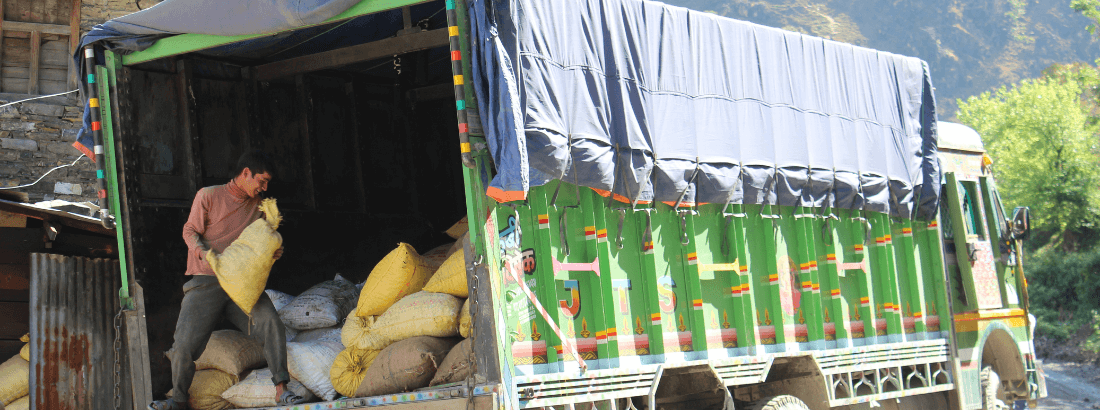Professor
Carsten Smith-Hall
Department of Food and Resource Economics
University of Copenhagen
The aim is to (i) develop interdisciplinary data integration and up-scaling techniques to identify realistic transition pathways for renewable resources, that (ii) promote the development of a feasible bioeconomy approach in low-income countries.

RQ1: How can natural and social science data on renewable resources be integrated and scaled up?
RQ2: What feasible and realistic transition pathways can be identified given political realities?
RQ3: How can these answers be used inductively to characterise and formulate a bioeconomic approach relevant to renewable resources in low-income countries?
WP1: Data integration and up-scaling
WP2: The political ecology of transition
WP3: Theorising the bioeconomy of renewable resources in low-income countries
1. Smith-Hall, C., Piplani, M. and Pyakurel, D. 2024. Theorising and analysing the forest-based bioeconomy through a global production network lens. Forest Policy and Economics 159: 103128.
2. Chamberlain, J. and Smith-Hall, C. 2024. Harnessing the full potential of a global forest-based bioeconomy through non-timber products: Beyond logs, biotechnology, and high-income countries. Forest Policy and Economics 158: 103105.
3. Smith-Hall, C., Pyakurel, D., Meilby, H., Pouliot, M., Ghimire, P., Ghimire, S., Madsen, S.T., Paneru, Y.R., Subedi, B., Timoshyna, A. and Treue, T. 2023. The sustainability of trade in wild plants – a data-integration approach tested on critically endangered Nardostachys jatamansi. PNAS Nexus 2: 1-9.
4. Madsen, S.T. and Smith-Hall, C. 2023. Wild harvesting or cultivation of commercial environmental products: a theoretical model and its application to medicinal plants. Ecological Economics 205: 107701.
5. Smith-Hall, C. and Chamberlain, C. 2023. Environmental products: a definition, a typology, and a goodbye to non-timber forest products. International Forestry Review 25(4): 491-502.
6. Smith-Hall, C. and Chamberlain, J. (Eds.) 2023. The bioeconomy and non-timber forest products. London: Routledge, 270pp.
7. Smith-Hall, C. and Chamberlain, J. 2023. Why focus on non-timber forest products in the bioeconomy? In Smith-Hall, C. and Chamberlain, J. (Eds.) The bioeconomy and non-timber forest products, Routledge, London, pp. 3-14.
8. Piplani, M. and Smith-Hall, C. 2023. A framework supporting the transition to a forest-based bioeconomy and its application to Nepal. In Smith-Hall, C. and Chamberlain, J. (Eds.) The bioeconomy and non-timber forest products, Routledge, London, pp. 164-178.
9. Chamberlain, J. and Smith-Hall, C. 2023. The keys to unlocking the bioeconomy with non-timber forest products. In Smith-Hall, C. and Chamberlain, J. (Eds.) The bioeconomy and non-timber forest products, Routledge, London, pp. 251-265.
10. He, J., Smith-Hall, C., Zhou, W, Zhou, W., Wang, Y. and Fan, B. 2022. Uncovering caterpillar fungus (Ophiocordyceps sinensis) consumption patterns and linking them to conservation interventions. Conservation Science and Practice 4(8): e12759.
11. Smith-Hall, C. and Bennike, R.B. 2022. Understanding the sustainability of Chinese caterpillar fungus harvesting: the need for better data. Biodiversity and Conservation 31: 729–733.
Piplani, M. and Smith-Hall, C. 2021. Towards a global framework for analysing the forest‐based bioeconomy. Forests 12, 1673
| Name | Title | |
|---|---|---|
| Carsten Smith-Hall | Professor, Head of Section |
|
| Henrik Meilby | Professor |
|
| Mariève Pouliot | Associate Professor - Promotion Programme |
|
| Thorsten Treue | Associate Professor |
|